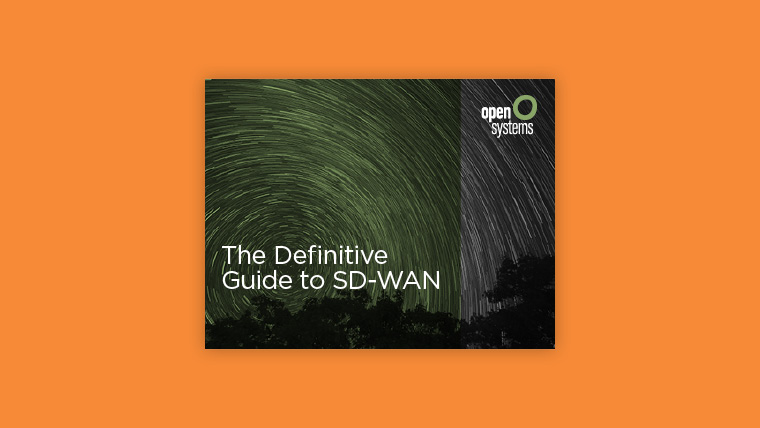
SD-WAN Migration
Businesses worldwide are transforming their patchwork of physical networks, security tools, and diverse connections into a simple to manage infrastructure using a software-defined approach. SD-WAN technology overlays the entire network with an intelligent homogeneous software layer. There are many benefits to an SD-WAN, including reduced costs, improved performance, and robust cybersecurity. Migrating a physical and manually managed network to an SD-WAN is not a simple flip of a switch. It requires several steps to ensure a successful transition.
Experts in Migrating Networks to an SD-WAN
30+ Years of
Customer Success
7,300+
Deployments
3+ Million
Users
The greatest challenge you will face is selecting the best SD-WAN managed service. Many MSPs and Telcos claim to offer SD-WAN managed services. Unfortunately, their SD-WAN products are often stitched together systems and technologies, often including third-party services.
These SD-WAN vendors generally lack the deep expertise and experience required to properly plan and execute a migration strategy, resulting in delays and a final solution that may present new problems such as security vulnerabilities.

How Should an SD-WAN Provider Manage the Migration Process?
Migrating to an SD-WAN requires an understanding of the customer’s goals and business processes. It requires a phased approach. Execution is important, but so are the other phases. Every customer and SD-WAN implementation is different. The time required to complete each phase will vary. SD-WAN migration, from start to finish, can be completed in days, weeks, or months. There are three main phases to migrating a network to an SD-WAN.
- Existing network infrastructures need to be mapped, including equipment, software, connections, lease line agreements, clouds, etc. It should extend from the core out to the edge and include all data centers, clouds, remote sites, and user categories. It’s also important to capture EOL software and hardware in addition to pending upgrades and patches.
- Performance and availability service level agreements and other requirements for various users and applications should also be captured. It’s also important to discuss current problems such as poor performance, hotspots, bottlenecks, or excessive high costs.
- Cybersecurity is a key element to any assessment and must be included in the SD-WAN. It’s important to define current requirements such as compliance, known vulnerabilities, access, and past experiences. Security tools, systems, and processes should also be reviewed.
- Future goals and business imperatives must be communicated. The SD-WAN vendor needs to understand what matters to the customer and be aware of future plans. What is important to the customer must be important to the SD-WAN vendor.
- Migration team members are selected and assigned areas of responsibility. Other stakeholders, such as site managers, application administrators, security specialties, department and company leaders, etc. should be involved or aware of the planning process.
- The SD-WAN design is created and reviewed and should include any existing infrastructure to be incorporated into the SD-WAN.
- The migration strategy and top-level goals are defined. That includes deciding on an ‘all-in-one’ or grouped migration approach with target completion dates.
- Tasks and timelines are detailed to define the specific executables throughout the entire migration process.
- QA and testing are performed to validate any assumptions within the migration plan, such as connectivity, performance, or security. Gaps requiring attention are identified. These gaps may include reviewing, upgrading, or replacing existing customer equipment or software that may connect to the SD-WAN.
- Identify any risks within the plan and prepare a path for resolution.
- Communicate the plan to stakeholders.
- Commence the transition process according to the migration plan.
- Monitor application performance, network traffic, and the user experience throughout the process to ensure service levels are being met.
- Validate performance, failover, load balancing, and traffic routing
- Validate security mechanisms, including applications, clouds, remote sites, users, and endpoints.
Assessment
Planning
Execution
Once the migration process is complete, streamline the SD-WAN to ensure costs are properly aligned.
- Existing network infrastructures need to be mapped, including equipment, software, connections, lease line agreements, clouds, etc. It should extend from the core out to the edge and include all data centers, clouds, remote sites, and user categories. It’s also important to capture EOL software and hardware in addition to pending upgrades and patches.
- Performance and availability service level agreements and other requirements for various users and applications should also be captured. It’s also important to discuss current problems such as poor performance, hotspots, bottlenecks, or excessive high costs.
- Cybersecurity is a key element to any assessment and must be included in the SD-WAN. It’s important to define current requirements such as compliance, known vulnerabilities, access, and past experiences. Security tools, systems, and processes should also be reviewed.
- Future goals and business imperatives must be communicated. The SD-WAN vendor needs to understand what matters to the customer and be aware of future plans. What is important to the customer must be important to the SD-WAN vendor.
- Migration team members are selected and assigned areas of responsibility. Other stakeholders, such as site managers, application administrators, security specialties, department and company leaders, etc. should be involved or aware of the planning process.
- The SD-WAN design is created and reviewed and should include any existing infrastructure to be incorporated into the SD-WAN.
- The migration strategy and top-level goals are defined. That includes deciding on an ‘all-in-one’ or grouped migration approach with target completion dates.
- Tasks and timelines are detailed to define the specific executables throughout the entire migration process.
- QA and testing are performed to validate any assumptions within the migration plan, such as connectivity, performance, or security. Gaps requiring attention are identified. These gaps may include reviewing, upgrading, or replacing existing customer equipment or software that may connect to the SD-WAN.
- Identify any risks within the plan and prepare a path for resolution.
- Communicate the plan to stakeholders.
- Commence the transition process according to the migration plan.
- Monitor application performance, network traffic, and the user experience throughout the process to ensure service levels are being met.
- Validate performance, failover, load balancing, and traffic routing
- Validate security mechanisms, including applications, clouds, remote sites, users, and endpoints.
Once the migration process is complete, streamline the SD-WAN to ensure costs are properly aligned.
Migrating to a software-defined network is simple if your SD-WAN vendor has experience. We are the industry-leading experts in migrating networks to an SD-WAN.
Contact our customer advocates to begin your migration to an SD-WAN.

Leave Complexity
Behind
To learn how Open Systems SASE Experience can benefit your organization, talk to a specialist today.
Contact Us




